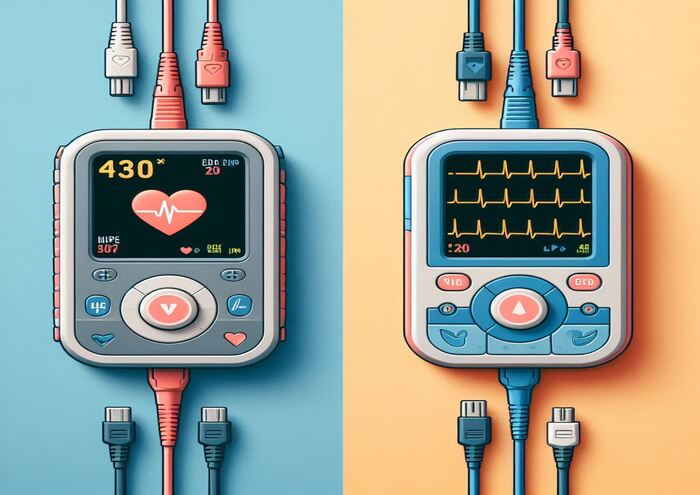The Evolution of ECG Holter Devices
Being hardware agnostic has always been in the DNA of Cardiomatics. Our mission is to allow users of different ECG recorders to harness the power of our state-of-the-art AI. Since the company’s inception, we have analyzed several hundreds of thousands of ECG recordings from multiple devices available on the market. Those devices can be categorized into two basic groups: cable holters and patches.
Cable holters emerged when it became possible to make ECG machines small enough to be carried by a patient during everyday activities. The first machine was designed by Norman Holter in 1947, weighed 38 kg and was the size of a backpack.
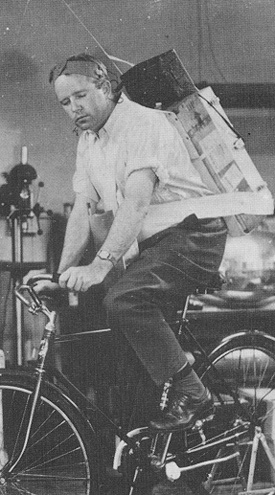
Original Holter biotelemetry apparatus in 1947 (source)
Today’s holter recorders can be as small as a match box and can record weeks of ECG data. They can be carried in a pocket or on a belt and are connected to the electrodes by cables. The placement of the electrodes is very similar to their placement for resting ECG.
ECG patches are a natural evolution of cable holters with a different design. Instead of several electrodes placed independently on the patient, there is one, larger adhesive patch that combines several electrodes. The recorder itself is attached directly to this adhesive patch without any cables. This configuration is typically more convenient to the patient and can be waterproof, allowing them to take a shower while data is being recorded.
ECG Patch Market Dominance: Why It’s Growing
This convenience for patients is driving the evolution of the market. For a few years now, we have observed sales of patch devices growing much faster than sales of cable holters. The healthcare ECG Patch dominated the long-term ECG monitoring market in 2022 with a revenue share of 57.60%. Patches are expected to exhibit very high CAGR of 24.72% during the forecast period.
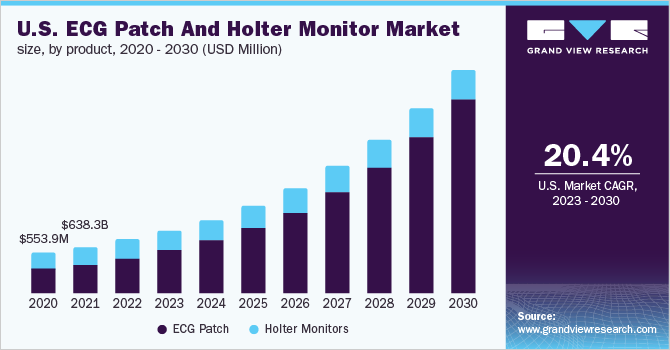
US ECG recorders market structure (source)
We see the same trend in our Cardiomatics internal data. The number of recordings from patches surpassed the number of recordings from cable holters in 2022Q3. Both are growing, but recordings from patches are growing at 192% annually while those from holters are growing at “just” 62% annually.
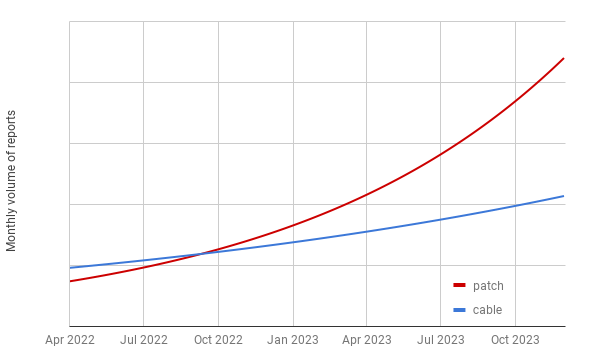
Of course, this doesn’t directly reflect the market share of the two product types, but it certainly says something about current trends. I believe we would not be far from the truth in saying that in the markets where Cardiomatics is present, the use of patches is growing approximately 3 times as fast as the use of holters.
Quality of data between ECG Patch vs. Cable Holter
We analyzed the 10 devices most commonly used with Cardiomatics software from 8 different manufacturers. The total sample size was 12,758 recordings, with at least 250 recordings from each individual model. The chart below shows the average amount of noise per model and the average across categories.
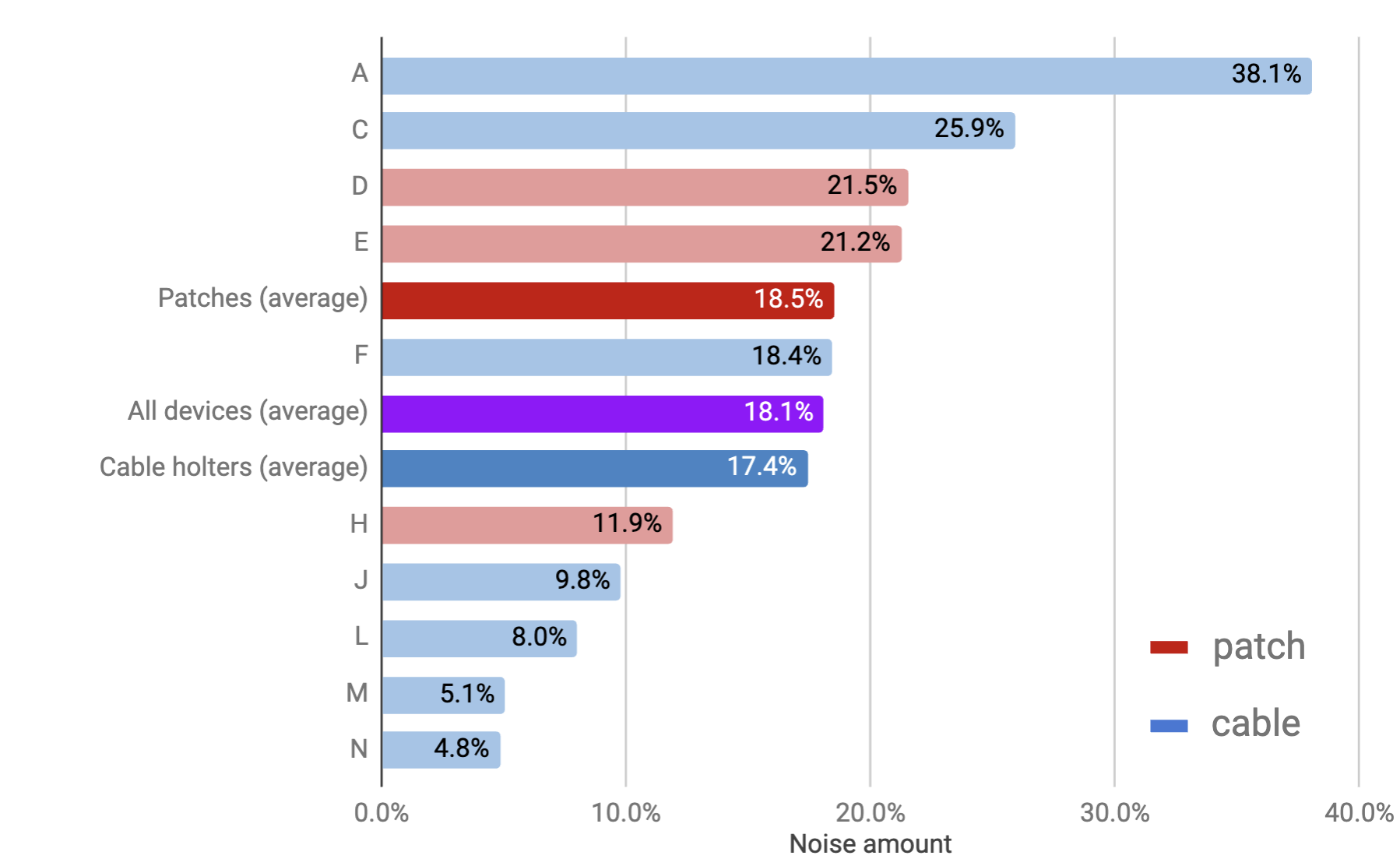
Interestingly, the average amount of noise across all patches and cable holters was similar (18.5% and 17.4% respectively). However, if you are looking for the best quality data, cable holters clearly dominate, with the top devices providing as little as 5% noise on average.
In my opinion, there are four main contributors to the final quality of the signal:
- The general quality of the electronic part of the recorder (including the analog part and analog-digital conversion).
- Electrode placement. With larger distances between electrodes, cable holters capture a larger-amplitude ECG signal, which translates to a higher signal-to-noise ratio.
- Patient activity. You can assume that a patient wearing a patch will be less limited in the performance of regular activities (like jogging) than a patient wearing a cable holter. Also, a device placed on the chest captures more artifacts from movements than a device worn, e.g., on a belt.
- And, last but not least, the quality of electrodes and the expertise of the person attaching them. We see that cable holters tend to be used in scenarios involving specialized nurses while patches are very often applied outside the clinic, including by patients applying them at home.
ECG Patch vs. Cable Holter Monitors: how to choose depending on your use case
We can clearly see that number of patients monitored with patches is growing rapidly. This is great. Their ease of placement and use makes the diagnostic process more accessible. As a result, we can see Holter recordings becoming more and more available in pharmacies, primary care facilities or even home care.
On the other hand, the number of patients monitored by cable holters in not decreasing. Cable holters still have a place in secondary care, where access to multiple ECG channels has distinct clinical benefits.
In any case, Cardioamtics is compatible with more than 40 commonly used Holter, ECG patch and other ECG device models so you can benefit from AI-powered ECG analysis with your current devices. See the Cardiomatics compatibility list.

